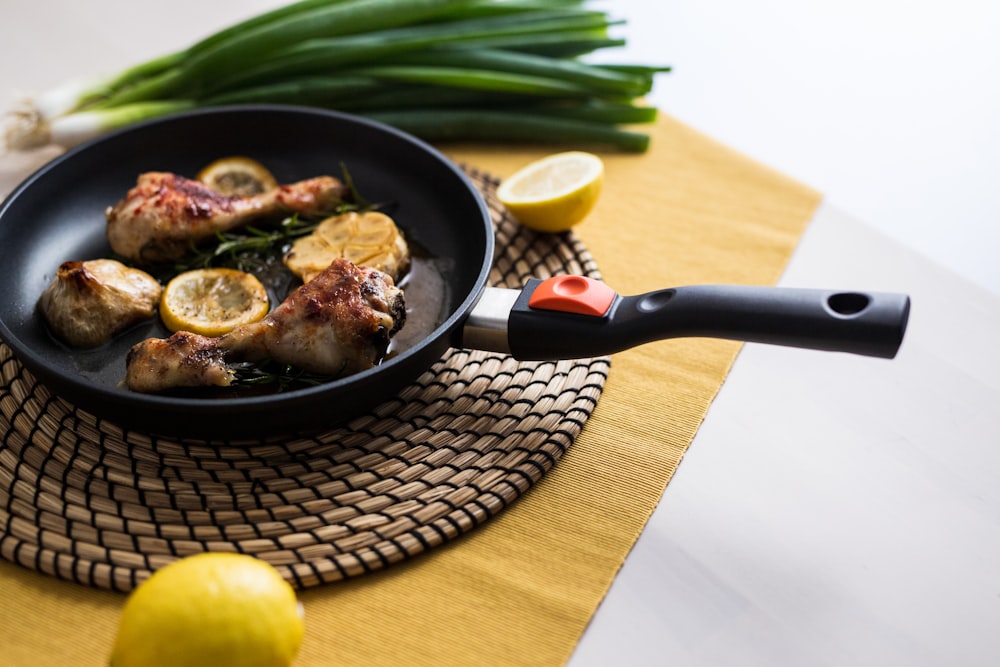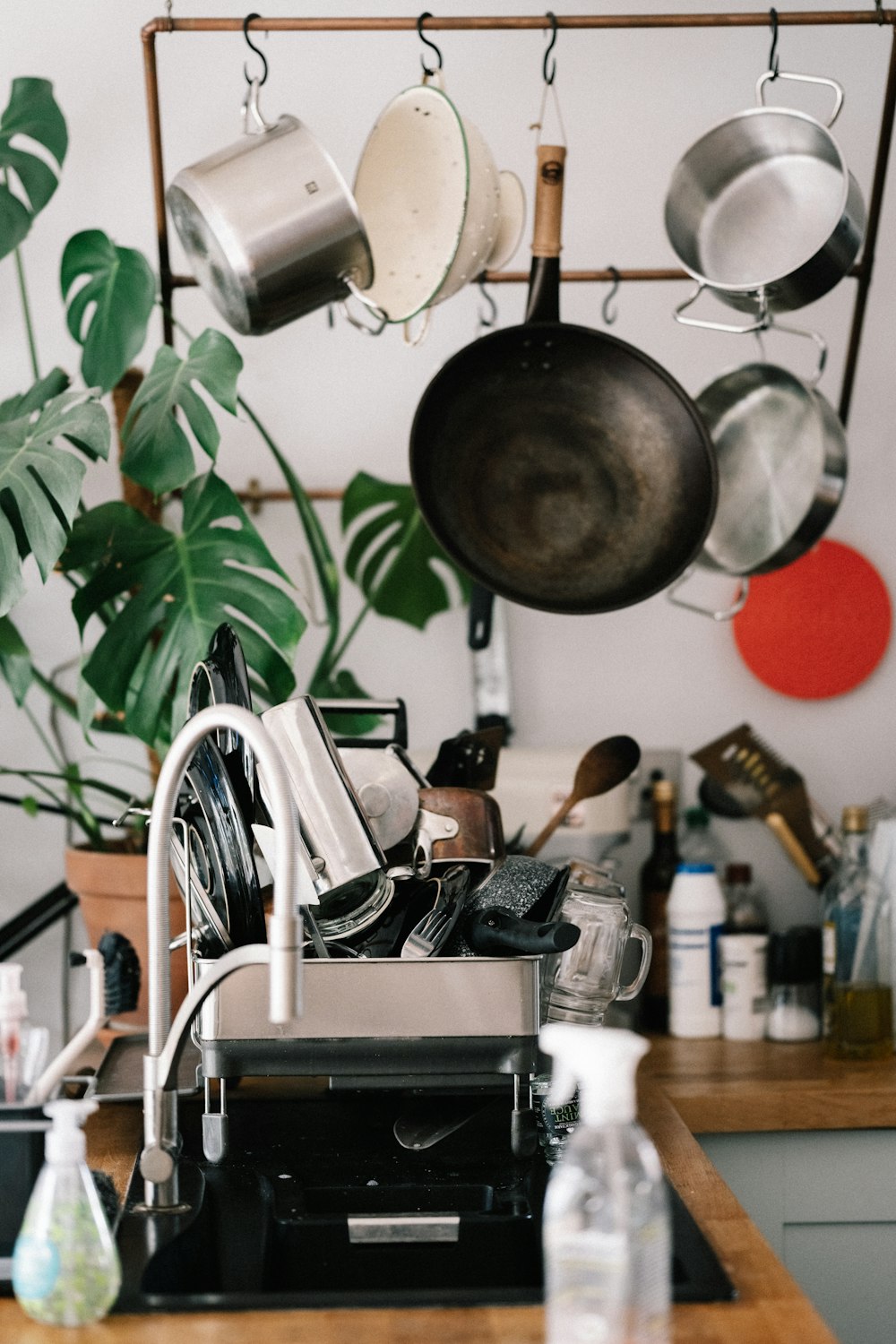When it comes to non-stick cookware, what is the best non stick cookware on the market today?
You have two options: teflon® coated cookware, which has a petroleum-based surface of PTFE or PFOA that creates a slippery non-stick surface, or ceramic coated green or eco-friendly non-stick cookware that is PFOA or PTFE free.
There are benefits and drawbacks to both types of non-stick cookware so you need to do your homework before determining is non stick cookware safe for your family to use. We have done some of the homework for you here in explaining what PFOA, PTFE and ceramic-based cookware are, the benefits and drawbacks of each type of cookware coating, and if PFOA and PTFE are really dangerous for you and your children.
What are PFOA and PTFE?
Is non-stick cookware safe? PFOA (Perfluorooctanoic acid), was developed in 1947 by 3M and in 1951 DuPont Corporation began using it to manufacture water repelling and non-stick surfaces.
PFOA, also known as C8, is a synthetic chemical compound used to manufacture fluoropolymer- and telomer-based consumer products, including the popular nonstick pan coating Teflon, and water repellant coating for clothing, called Gore-Tex. PFOA coated pans are sold as Teflon coated non-stick cookware. Tests have shown that PFOA coated pans release toxic gases and particulates into the food, posing a potential health risk. If a PFOA coated non-stick pan is overheated, above 500 degrees Fahrenheit, the non-stick coating can liquefy and pose a potential toxic risk if the coating is absorbed into the food.
Studies have shown if a PFOA coated pan is used as directed by the manufacturer and at temperatures under 500 degrees, the EPA states they are safe for use. If the non-stick pan is scratched or the non-stick coating is pealing, the pan should no longer be used.
PTFE (Polytetrafluoroethylene), is a thermoplastic synthetic polymer that is used as a non-stick coating for pans. It was developed by DuPont in 1938 and marketed under the name Teflon. PTFE is considered safe and stable until it reaches temperatures of 550 degrees Fahrenheit. After reaching 550°, the material begins to deteriorate and decompose.
Digesting PTFE can be lethal to birds, and can cause flu-like symptoms in humans. If your Teflon coated non-stick pan overheats, starts to chip or crack, stop using immediately. Chips or cracks in the Teflon coating can allow toxic gases to escape into the air you breathe or contaminate your food.
Even when used properly, it is believed that trace amounts of PFOA and PTFE are absorbed into your food as part of the cooking process, but it is unclear if these small amounts post a health risk.
Ceramic Non-stick Pans

In an effort to offer a green or eco-friendly alternative to Teflon coated non-stick cookware, several cookware companies have introduced PFOA and PTFE free non-stick cookwar, often referred to as ceramic non stick pans. One popular alternative is ceramic based non-stick coating.
Manufacturers state that the ceramic coating is 100% natural and comes from the earth, while PFOA and PFTE do not exist anywhere in nature, and actually harm soil, ground water, animals and humans when Teflon coated pans are allowed into landfills since the coatings never decompose.
I use the Cuisinart GreenGourmet Non-stick cookware. They use Ceramica® a ceramic based non-stick coating. A nice advantage of Ceramica over Teflon, is that ceramic-based non-stick cookware can be used in the oven while Teflon coated pans can only be used on the stove top on low to medium heat.
One disadvantage of ceramic pots and pans is that it doesn’t last as long as Teflon coated pans, but I have found a way around this dilemma. I add the olive oil to the pan when it is cool and allow it to get hot before adding the eggs or other food items.
This works like a charm at allowing the food to start cooking faster and prevents scrambled eggs or omelets from sticking to the pan. When I add the oil after the pan is hot, the oil viscosity breaks down quickly and food will still stick.
To learn more about the Cuisinart Green Gourmet ceramic non stick pans I use in my home, just click here to read my Cuisinart Green Gourmet Cookware Review, and decide for yourself if this is truly the best non-stick cookware alternative for you and your family.
Happy Cooking,
Sources:
http://www.cuisinart.com/products/cookware/GreenGourmet/GreenGourmetSet/gg-12.html
http://www.realsimple.com/food-recipes/how-safe-your-kitchen-10000001605877/page8.html
http://www.drweil.com/drw/u/QAA400862/Are-Nonstick-Ceramic-Pans-Better.html
- Healthy Vegan Diet Plan – the One Month Vegan Challenge - September 8, 2023
- The Worst Foods that Causes Aging Faster, and What You Can Do? - August 30, 2023
- Is a Soup Diet for Weight Loss A Healthy Way to Lose Weight? – 14-Day Soup Diet - August 8, 2023



The best non-stick cooking ware is certainly teflon, the best part of it is you can use very little oil to cook your food.